Two Days After COP28, IEA Delivers More Coal Hard Reality
The Iron Law of Electricity strikes again. Global coal use will hit 8.5B tons this year, another new record
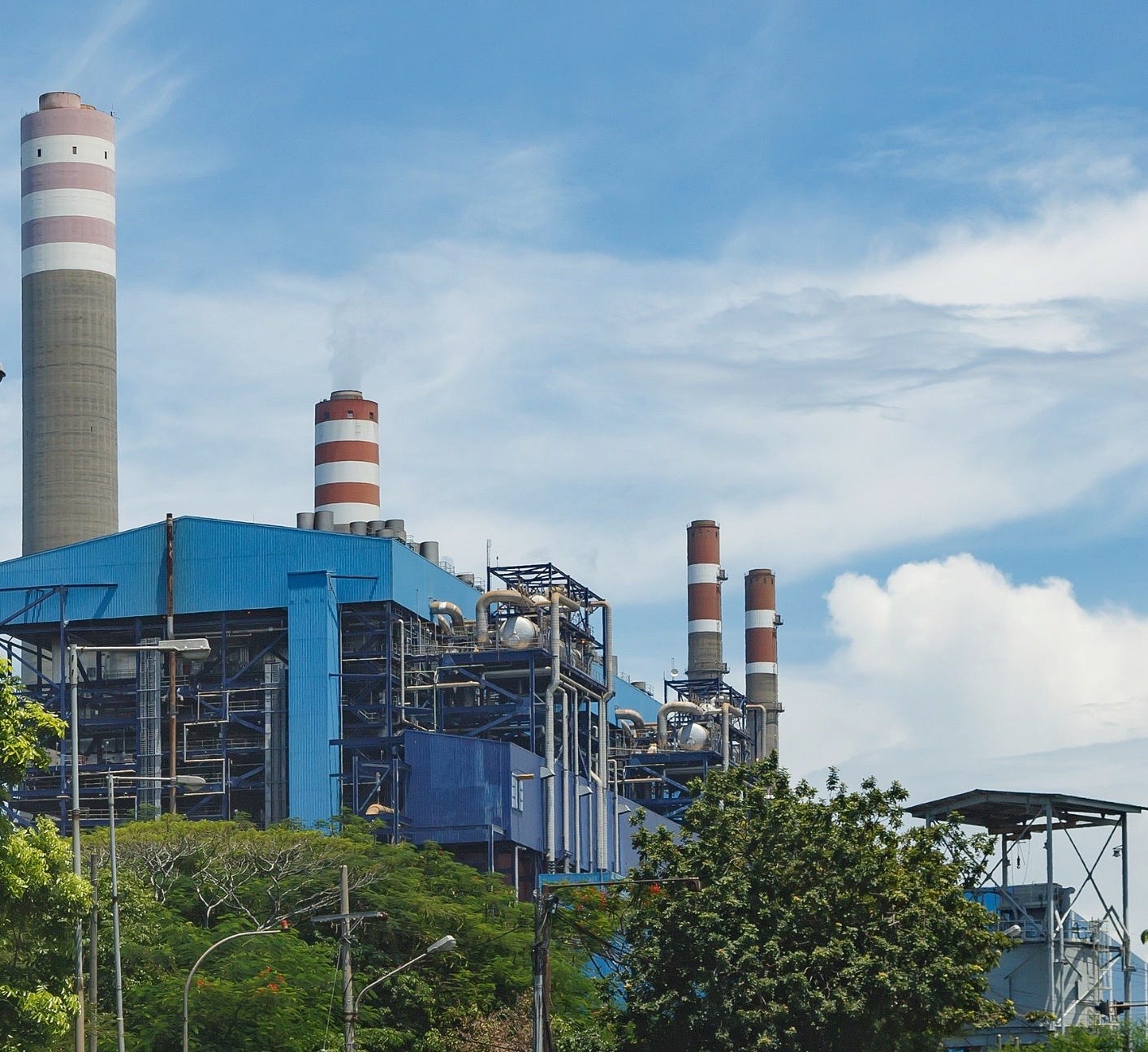
Like The Dude in The Big Lebowski, coal abides.
Last Friday, two days after the COP28 meeting in Dubai ended, the International Energy Agency reported that global coal demand will set another new record this year. Use of the carbon-heavy fuel in Western countries is falling, the IEA said, but demand in emerging and developing economies “remains very strong, increasing by 8% in India and by 5% in China in 2023 due to rising demand for electricity and weak hydropower output.”
The IEA expects coal use to rise by 1.4% this year and set a new record of 8.5 billion tons. That increase shows, yet again, how difficult it will be to achieve significant cuts in CO2 emissions from hydrocarbon use. Mainly due to coal use, which accounts for about 40% of emissions from energy, global CO2 emissions will set another new record in 2023 of 36.8 billion tons.
Surging coal use also shows that the Iron Law of Electricity hasn’t been repealed. That law says, people, businesses, and countries will do whatever they have to do to get the electricity they need. The surge in coal use is a sober reminder that the fuel remains a cornerstone of electricity generation, particularly in Asia. The IEA noted that coal-fired generation will rise by about 158 terawatt-hours, or 1.5%, this year. It also reported that India and China have “struggled to keep the lights on during periods of high electricity demand...owing to coal shortages and high prices. As a result, both governments have intensified efforts to increase coal production.”
The surge in coal use also shows that the effort by Michael Bloomberg, who has given $1.1 billion to the Beyond Carbon campaign to shutter huge amounts of U.S. coal- and gas-fired generation capacity, will have little, if any, discernible effect on global emissions. (More on that in a moment.) Furthermore, despite the exciting announcement at COP28 that more than 20 nations have pledged to triple nuclear energy production by 2050, the amount of new coal-fired capacity under construction is eclipsing, by a vast margin, the current growth in nuclear energy.
The ongoing increase in coal use provides a strong counter-narrative to claims that policymakers made significant progress in Dubai. On Wednesday, the UNFCC issued a press release that said the agreement reached at the end of the meeting “signals the ‘beginning of the end’ of the fossil fuel era by laying the ground for a swift, just and equitable transition, underpinned by deep emissions cuts and scaled-up finance.” It also calls for accelerated efforts “towards the phase-down of unabated coal power.” Another agreement calls for a tripling of global renewable energy capacity by 2030. (My prediction: that goal is just more happy talk. There is no way that target will be achieved.)
The renewable pledge was signed by 123 countries. As seen in the graphic below, which I made using Statistical Review of World Energy data from 2022, even a tripling of renewable capacity won’t make a huge dent in global hydrocarbon use, and therefore, achieving the net zero target by 2050 is little more than wishful thinking.
After the Dubai meeting, U.S. climate envoy John Kerry claimed the agreements made at COP28 are sending “very strong messages to the world.” But those messages aren’t being heard in Beijing, New Delhi, or Jakarta.
China, India, and Indonesia didn’t sign the agreement to triple renewables. And while those three countries are boosting their renewable production, they are also the largest coal producers globally. The IEA coal report states, “all three are expected to break output records in 2023.” Furthermore, those three countries are building 182,000 megawatts of new coal-fired capacity. Put another way, about 89% of global coal-fired capacity is being built in those three countries. For perspective, the U.S. now has about 200,000 megawatts of coal-fired capacity.
As I noted last Tuesday in “COP28 Gets Coal In Its Stocking,” demand for the commodities needed for alt-energy projects in Western countries, including EVs and solar panels, has spurred growth in electricity demand in Asian nations like China and Indonesia and:
Some 204,000 megawatts of new coal-fired capacity is now under construction around the world. Of that 204,000 MW, about 67% is in China. To put that massive amount of new capacity in perspective, the U.S. currently operates about 205,000 MW of coal-fired power plants... In addition to the huge amount now being built, another 353,000 MW of coal-fired capacity has been announced, pre-permitted, or permitted. Of that 353,000 MW in the queue, about 72% is in China.
All of that new coal-fired capacity will be added to the existing coal fleet, which now totals 2.1 terawatts (TW), according to the latest data from Global Energy Monitor. The slide below is similar to the one I published last week. But it better illustrates the staggering scale of China’s installed capacity. By itself, China has more than five times as much coal-fired capacity as the U.S. The slide also shows the enormous amount of new capacity China has in the queue.
Of course, the ongoing growth in coal demand doesn’t fit the narrative promoted in Dubai about the end of “unabated” coal use. Indeed, the IEA’s coal report mocks several previous reports issued by the Paris-based agency. In 2015, the IEA declared, "The golden age of coal in China seems to be over." That year, the agency predicted global coal demand would fall to 5.5 billion tons by 2020.
Also in 2015, following the COP meeting in Paris, the IEA’s Executive Director Fatih Birol said, “investments in projects using high-carbon fuels were risky.” Birol said, “Investors are free to do what they want, but I see there will be growing pressure on high-carbon investments in the years to come,” Birol said. He continued, “Renewable energy is becoming a mainstream fuel. With declining costs of renewables and strong government support, they are becoming the favorite option for many investors.”
In its World Energy Outlook 2017, the IEA said, “China remains a towering presence in coal markets, but our projections suggest that coal use peaked in 2013 and is set to decline by almost 15% over the period to 2040.” Global coal didn’t peak in 2013 or 2015. Instead, it has risen dramatically. That surge underscores the danger that the U.S. faces from climate activists who are funded by the Beyond Carbon campaign and are trying to shutter all of the remaining domestic coal plants and half of America’s natural gas plants.
The growth of coal use around the world shows the futility, and real danger, of prematurely closing our coal plants. As I reported here two months ago in “Michael Bloomberg’s $1 Billion Assault on The Electric Grid,” the multi-billionaire media mogul is funding the Beyond Carbon campaign, which aims to shutter about 40% of U.S. electricity production in the name of climate change. As I noted then,
a more radical agenda is difficult to conjure...the Beyond Carbon campaign aims to eliminate about 1,813 TWh of dispatchable thermal generation from the U.S. electric grid and do so by 2030. Put another way, the 1,813 TWh/year of electricity that Bloomberg wants to eliminate equals the combined annual electricity use of nine states: Texas, Florida, California, Ohio, Pennsylvania, New York, Georgia, North Carolina, and Illinois.
I also noted that Bloomberg and his allies at the Sierra Club, League of Conservation Voters, Rocky Mountain Institute, and Earthjustice, are launching their campaign to shutter all of our coal plants despite numerous warnings from grid operators, federal authorities, and trade groups that the U.S. grid is facing serious reliability challenges.
For instance, Federal Energy Regulatory Commission chairman Willie Phillips told the Senate Energy and Natural Resources Committee in May, “We face unprecedented challenges to the reliability of our nation’s electric system.”
Last week, the North American Electric Reliability Corporation warned that the premature closure of coal plants and other dispatchable generation capacity could lead to dangerous shortfalls in power availability over the coming years. It said, “Environmental regulations and energy policies that are overly rigid” are a particular concern and that utilities could be closing plants too soon, thereby “jeopardizing the orderly transition of the resource mix.”
Finally, the growth in coal also underscores the need to dramatically ramp up global nuclear energy output. In Dubai, the U.S. helped lead a group of nations in the pledge to triple nuclear energy production by 2050. But as seen in the graphic below, which uses info from Global Energy Monitor and the International Atomic Energy Agency, the amount of coal-fired capacity being built in China and India vastly exceeds the amount of new nuclear capacity being built.
The pledge to triple nuclear energy by 2050 was endorsed by 25 countries: Armenia, Bulgaria, Canada, Croatia, Czech Republic, Finland, France, Ghana, Hungary, Jamaica, Japan, Republic of Korea, Moldova, Mongolia, Morocco, Netherlands, Poland, Romania, Slovakia, Slovenia, Sweden, Ukraine, United Arab Emirates, United Kingdom, and the United States. As I said earlier, that pledge is encouraging. More nuclear capacity is sorely needed.
But as seen in the graphic below, three times as much coal capacity is being built globally as nuclear capacity.
The point of these graphics is not to cheer on the growth of coal. Instead, it is to remind policymakers that we can’t simply wish for coal to go away. Global CO2 emissions are just that: global. We cannot solve the climate challenge by banning gas stoves and prematurely shuttering the valuable coal plants that help keep our electric grid reliable and resilient.
We must be sober about the enormity of the task ahead. We have to quickly develop and deploy affordable sources of electricity generation that are scalable, have small footprints, high power densities, and are low, or no-carbon. That means we need N2N, natural gas to nuclear. And we need to get busy right damn quick.
Click that ♡ button, please.
Remember: sharing and subscribing to this Substack are worthwhile activities.
Recent media hits include two panels I moderated at last month’s Alliance for Responsible Citizenship inaugural conference in London. One panel was on innovation in the energy sector, including nuclear. Click here for that one. The other was about the unconsidered risks of renewable energy. You can watch that one here.
Also, on the media front, last week, I was on the Infineo podcast with my friend, economist Robert Murphy, talking about energy policy and what has happened in Europe.
Thanks.


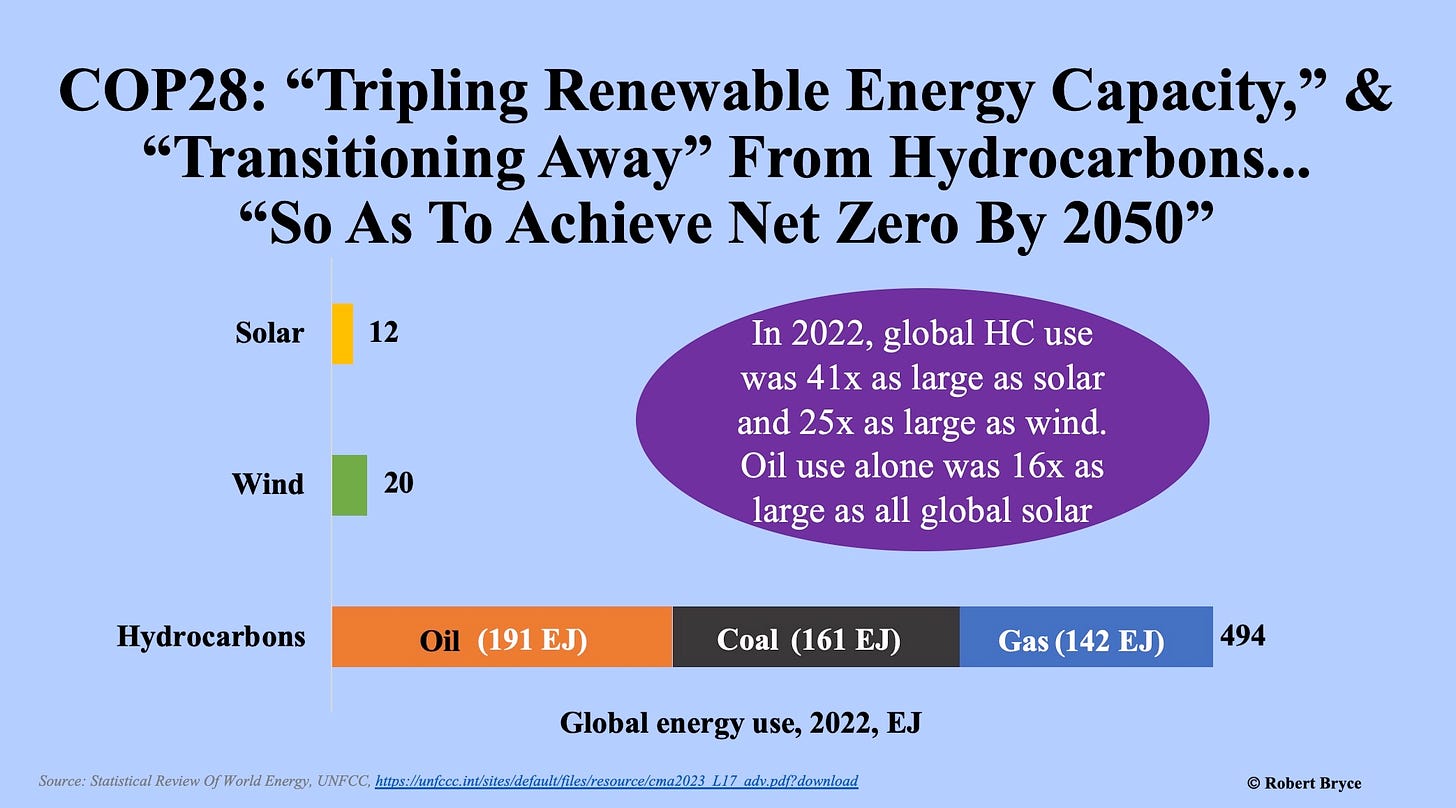
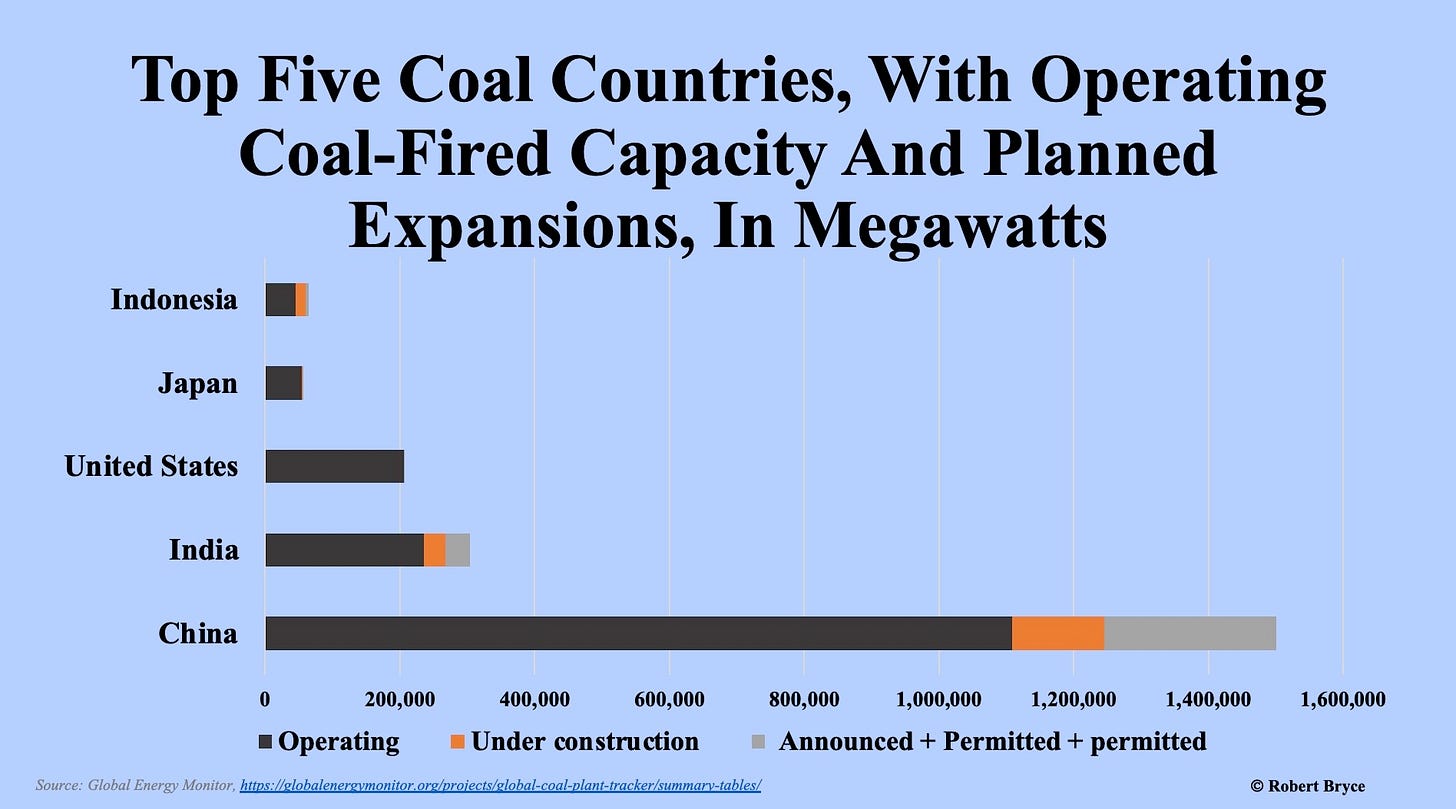
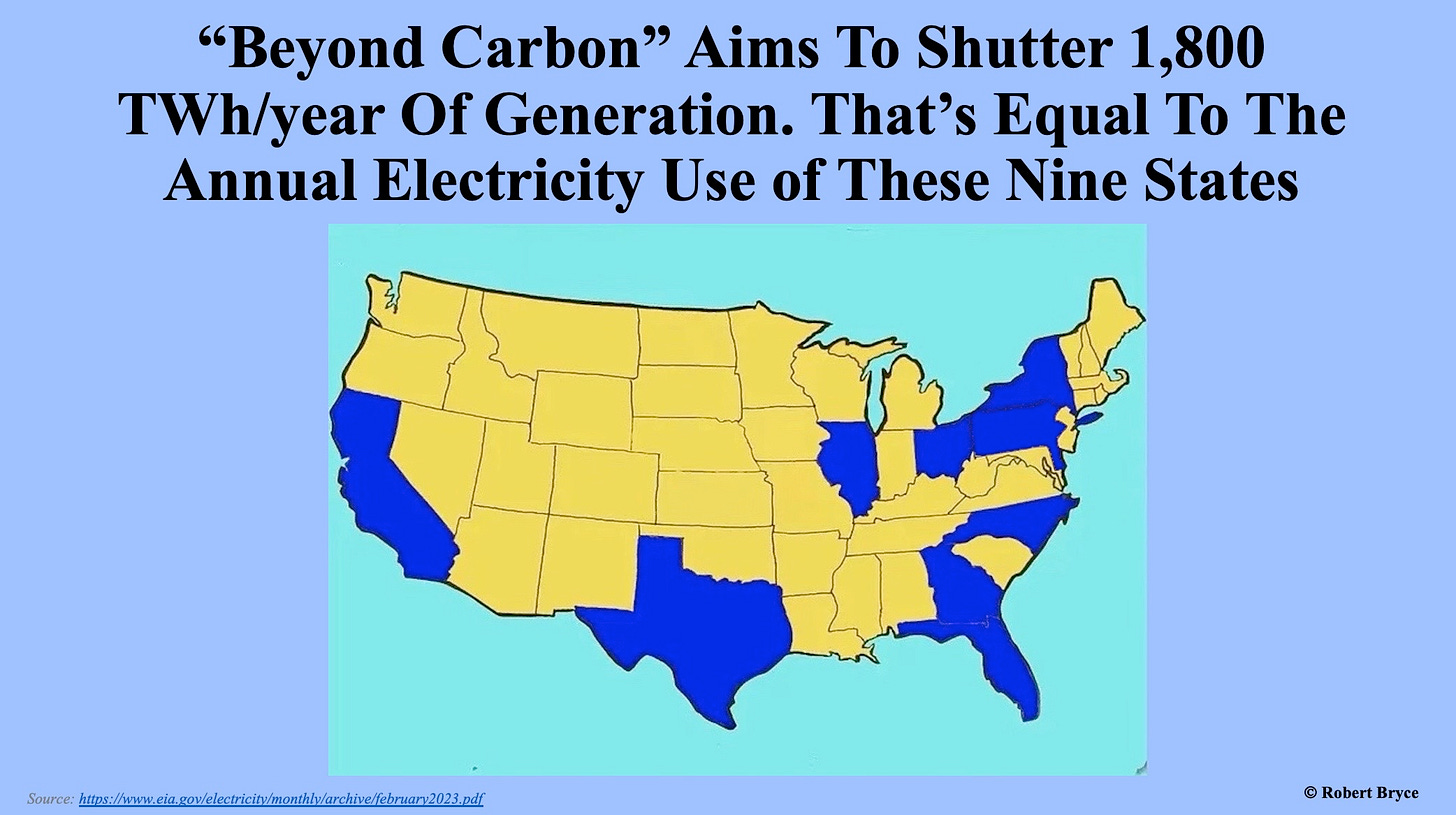
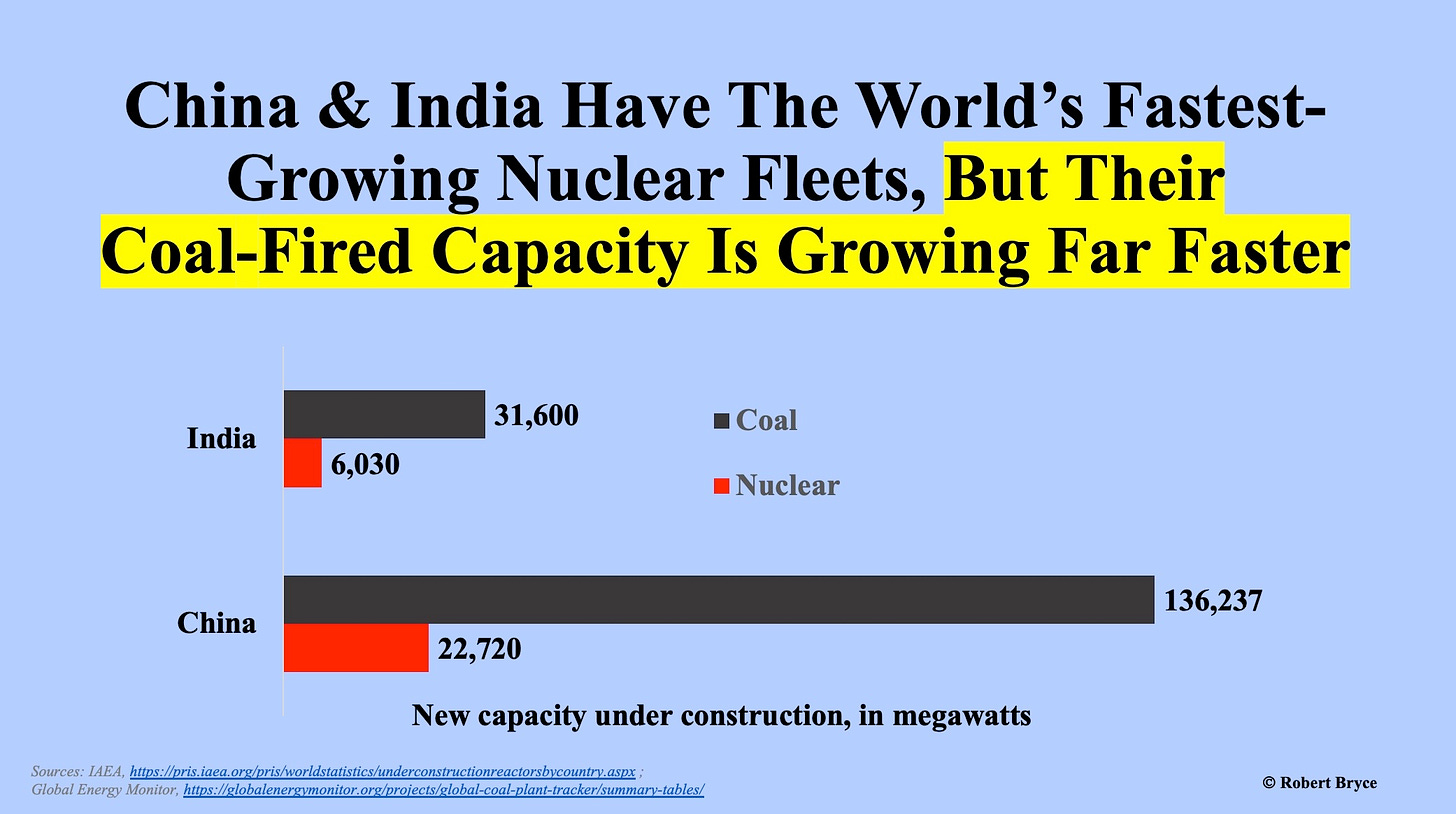
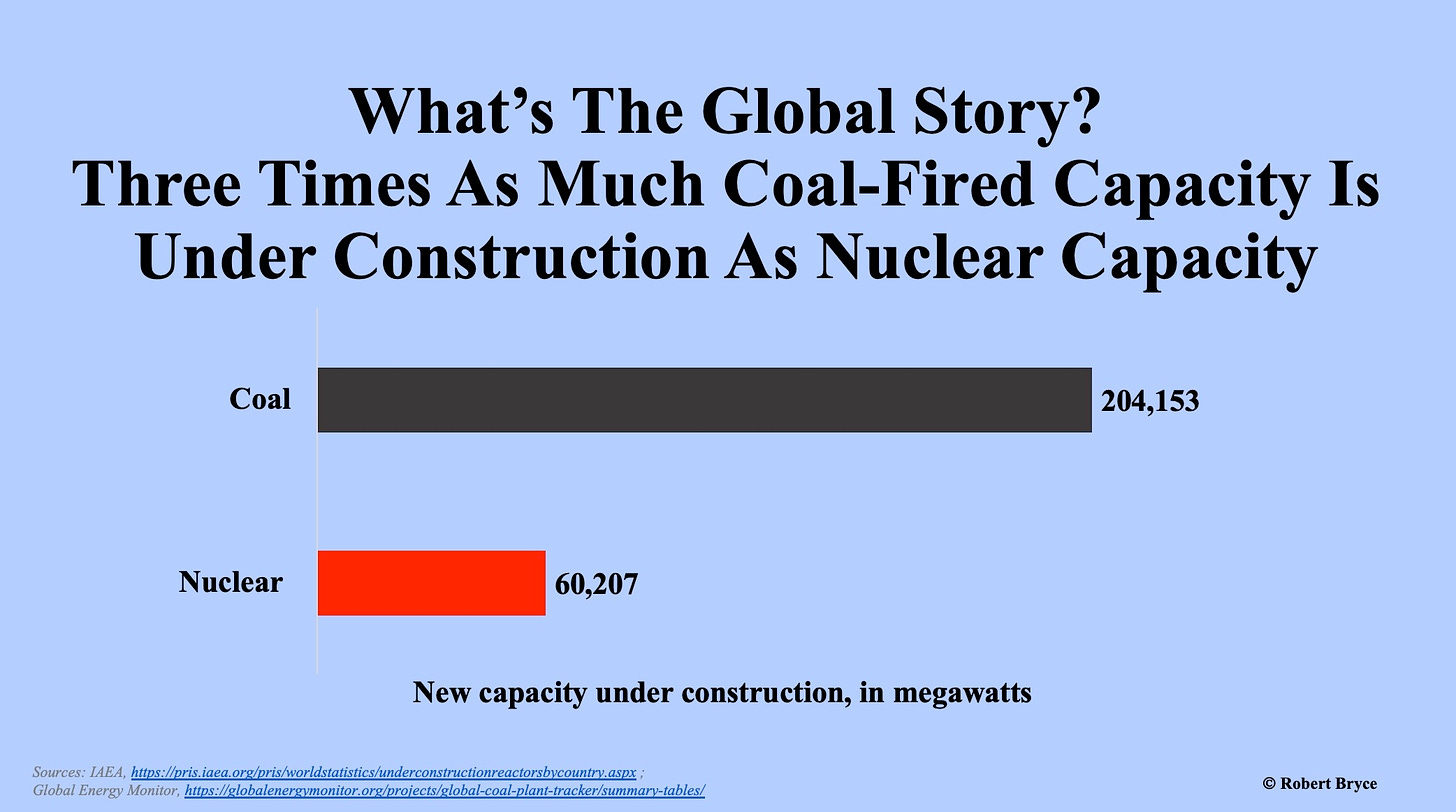
Robert Bryce consistently provides cold, clear-eyed energy sector analysis without hubris. His truthful assessment of what's really going on with coal, despite Cop 28's delusional pledges, is a breath of fresh air. Pun intended.
"We must be sober about the enormity of the task ahead. We have to quickly develop and deploy affordable sources of electricity generation that are scalable, have small footprints, high power densities, and are low, or no-carbon."
Great article until this. Low- or no-carbon? Based on what, exactly? So-called "climate change" cultism? And what on earth do you do about the planes, trains, and automobiles that you will never get to run on batteries?
If your goal is "decarbonization", there is only one way. And we are it. Put another way, *we* are the carbon our elites want (and need) to get rid of.
Embrace coal, oil, and every energy option. Do not give the death cult one single inch.